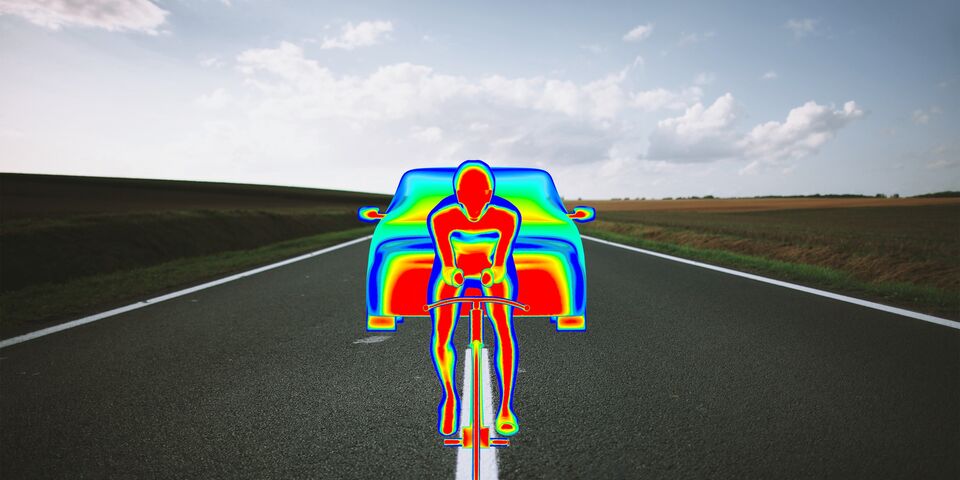‘Following team car may decide Tour prologue’
Will next Saturday’s Tour de France prologue in Utrecht get the winner it deserves? New aerodynamic research at TU/e shows that riders in a time trial can save vital seconds by riding closer to the following team car. Aerodynamics professor Bert Blocken is advising the international cycling union UCI to change the rules and increase the minimum gap between riders and their team cars. “The present rules could lead to unfair advantage.”
It’s well known that cyclists save wind resistance by riding behind a car. But the fact that wind losses also drop when you’re in front of a car is a new finding. In simple terms, a car reduces the pressure drop behind you – which slows you down – while you’re riding. And the smaller the gap between rider and car, the bigger the effect of the team car behind.
TU/e professor and cycling enthusiast Bert Blocken uses his aerodynamics knowledge to calculate the effects that following team cars have in today’s cycling. Those cars should officially hold a distance of at least 10 meter, even though in practice they often maintain a shorter gap. Blocken has carried out computer simulations and wind tunnel measurements using models of a time trial rider and team car. He was surprised by the results: the effect proved to be greater than expected.
In the case of the prologue of the Tour de France next Saturday in Utrecht, riders in this time trial can save around 6 seconds if the team car maintains a gap of 5 meters, instead of the 10 meters laid down by the regulations. That difference can be decisive: time trials have often been won or lost by smaller margins. In a typical 50 kilometer time trial, the time difference can add up to 20 seconds or more. And if the gap between the rider and the team car is reduced to just 3 meters, it can even reach a full minute. Strictly speaking that may be against the rules, but TV pictures show that in practice that team cars don’t always observe the 10 meters laid down by the regulations.
Even though the effect may in practice be less due to changing conditions, Blocken hopes that his findings will convince the UCI, the international cycling union, to change the rules for following team cars. “Now there may be an unfair advantage. That 10 meter gap was originally laid down for safety reasons, when this effect wasn’t known. To remove any doubts the UCI should now increase the minimum gap to 30 meters, because at that distance the effect of team cars is negligible. And of course that should be strictly enforced, to make sure that everyone sticks to it.”
Source: TU/e Press Team


Discussion